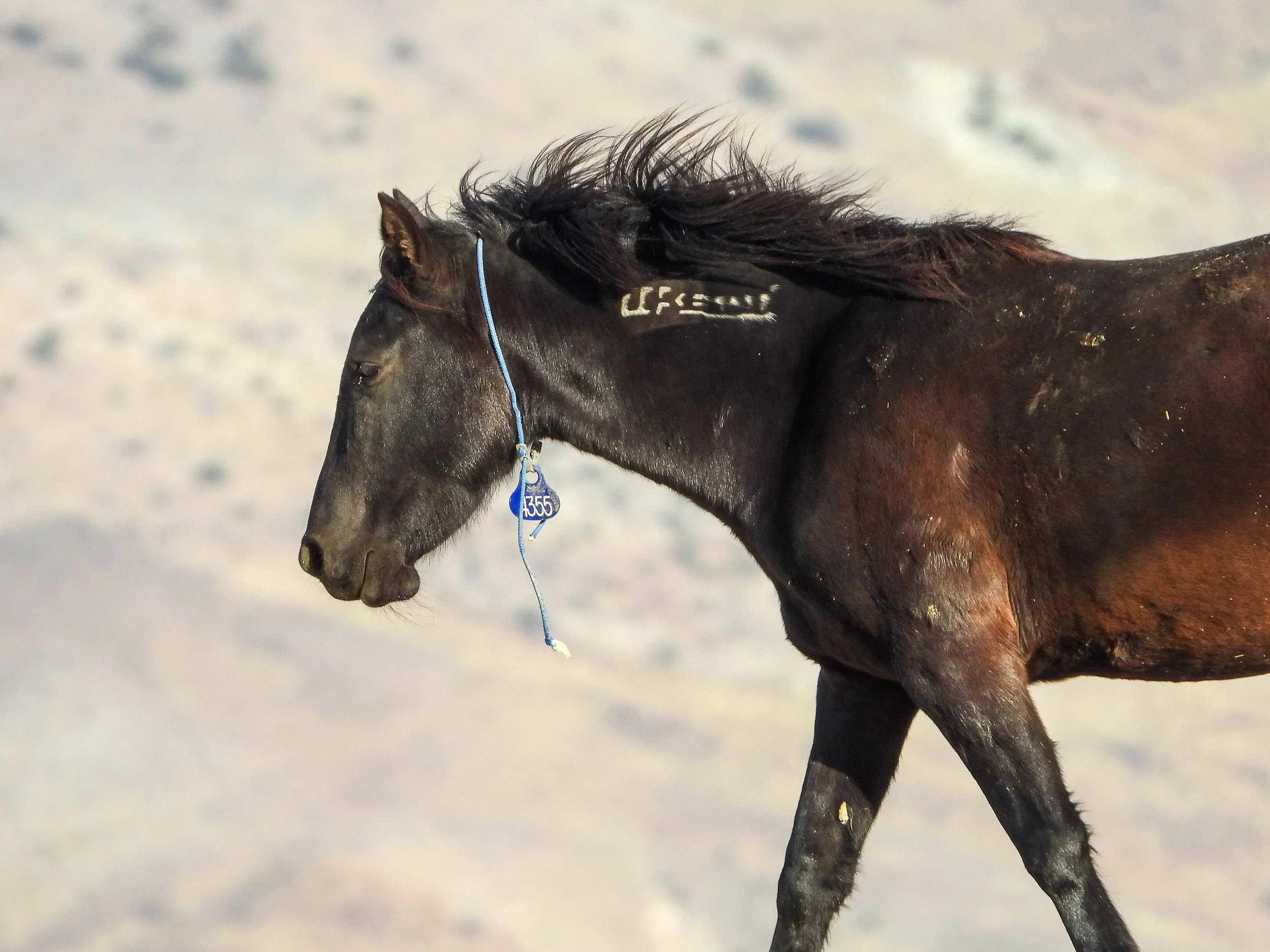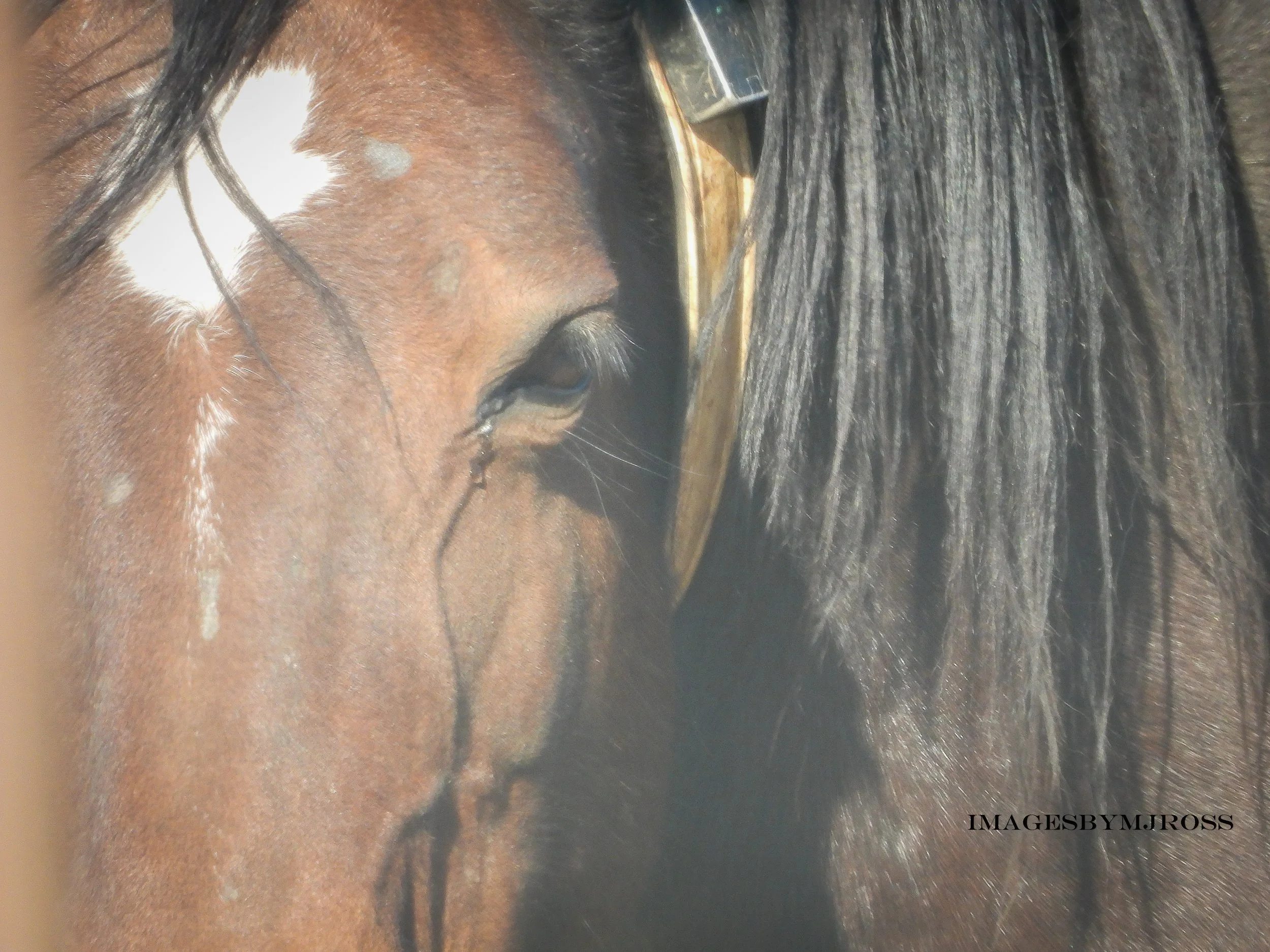
The Wild Horse and Burro Comprehensive Animal Welfare Program (PIM 2021-002): A Promise Unfulfilled
Until management practices change, until transparency is enforced, and until deaths after roundups are fully counted and addressed, the Comprehensive Animal Welfare Program remains a promise unfulfilled.
Wild horses and burros deserve more than policy memos.
They deserve to live free, protected, and respected on the lands that are legally theirs.

BlueWing roundup and the Failure of Animal Welfare Oversight- we all remember this roundup well.
The 2024 Blue Wing roundup became the deadliest of the year for U.S. wild horse and burro roundups. A total of 1,665 animals were removed. Forty-two deaths were officially reported during the operation, attributed to traumatic injuries such as broken necks and blunt force trauma, as well as euthanasia for pre-existing conditions. After shipment to short-term holding facilities, another 144 animals died.

So What Is the Real Mortality Rate? The real death toll of a roundup is not just what happens at the trap. It’s everything that happens because of the trap.
When all deaths connected to the roundup include trap-site, short-term holding, long-term holding, and surgical complications the mortality rate becomes significantly higher.
The BLM knows this.
But they only publicize the number that makes the operation look humane.
The Public Deserves the Whole Truth
Wild horses are not dying because they are sick, weak, or “starving on the range.”
They are dying because they are being chased, stressed, injured, and torn from the environment their bodies evolved to survive in.
It’s everything that happens because of the trap

Reclassify Wild Horses as a Native Species
Wild horses have lived on the North American landscape far longer than many of the animals we legally recognize as “native.” Science confirms that the modern horse evolved here—on this continent—before becoming extinct during the Pleistocene and returning with the Spanish. Their DNA links directly to the prehistoric horses that once roamed the same basins, valleys, and mountain ranges they occupy today.

Giving Tuesday Wild Horses Lives Matter
For a long time, I was doing this work under another organization, making an impact on their behalf. But now, I’m asking for the opportunity to make that same impact—and more—through my own organization, Wild Horses Lives Matter.
I want the chance to change outcomes, to demand transparency, and to push for real accountability.
What makes Wild Horses Lives Matter different from other organizations is simple: We show up. We answer messages. We respond to the public. We educate people who are trying to understand what’s happening. We provide photos, videos, and firsthand documentation when you ask for it.
We don’t focus on just one part of the mustang’s journey. We are committed to them every step of the way—from the range, to the trap sites, to holding, to adoption and homing, and even to the kill pens where too many end up when the system fails them.
Wild Horses Lives Matter has been here for the mustangs and for the people who care about them. Join us in this fight.

BLM’s Broken Promise: How Decades of Mismanagement Have Failed America’s Wild Mustangs
For decades, concerns about the management of America’s wild horses and burros have grown louder, more urgent, and more heartbreaking. The Bureau of Land Management tasked with protecting these animals under the 1971 Wild Free-Roaming Horses and Burros Act has presided over a system that many agencies, lawmakers, and experts have acknowledged is deeply broken.

From Wild to Wanted. Not Wild to Wasted
Wild Mustangs are failing in the adoption system because their transition off the range is ignored. New Home Syndrome is real, and without proper education and support, these horses are pushed into a cycle that ends in kill pens. We can stop this by demanding responsible management and protecting the welfare of every Mustang from range to home.

Flipping the preference to Wild Horses instead of cattle- buy a base property
A base property is a game changer — it gives your efforts real value and helps move livestock off the land so Wild Horses can return to the range where they belong

Wild Horses Lives Matter
Learn more about Wild Horses Lives Matter
The organization remains committed to transparency, efficiency, and purpose-driven work. Each dollar entrusted to Wild Horses Lives Matter directly contributes to protecting the freedom, dignity, and survival of America’s wild horses

Wild Horse Diets are Adaptable
A sweeping University of Wyoming study of wild horses on federal lands across seven Western states has found that the animals have a high ability to gain nutrition from a variety of plants and, by so doing, maintain good body condition, even in winter.

BLM Winnemucca Wild Horse Holding Facility. (100 Acre w/ 4,000 Horses) FOA returns to court for appeals
In legal filings and court rulings tied to a 2022 environmental challenge, the Ninth Circuit noted that the Winnemucca Off-Range Corrals operate under the same conditions and standards as other BLM holding facilities nationwide.

What Happens to the Wild Horses Wearing USGS Collars if Federal Funding is Cut?
When Americans think of wild horses, we picture untamed freedom — not government-issued GPS collars and data transmitters strapped around their necks. But hundreds of mustangs across the West currently carry those collars, part of U.S. Geological Survey (USGS) studies designed to track their movements, survival, and range use.

Beyond the Blame: Human Activities Ravaging Nevada's Public Lands While Wild Horses Take the Fall. Does anyone consider noise pollution being part of the blame for the wildlife declining numbers
Nevada leads the nation in mining, with over 180,000 active claims on BLM lands, primarily for gold and lithium. Projects like the proposed Rhyolite Ridge lithium mine and others approved in 2024 threaten biodiversity by degrading water sources, fragmenting habitats, and leaving toxic legacies that persist for millennia. Groundwater drawdown from mining can drop levels by hundreds of feet, drying up springs vital for wildlife and horses alike. Abandoned mines pose physical hazards and pollute waterways, harming ecosystems far beyond horse grazing impacts. Yet, while horses are rounded up for "overpopulation," mining expands, encroaching on HMAs and cultural sites.

Overpopulation of Wild Horses: What the Data & Funding Don’t Tell Us
Many Americans believe that wild horses and burros are vastly overpopulated on public lands..that their numbers are exploding, they are degrading ecosystems, and they must be removed. But a close look at the data, the models, and the funding reveals a far more complex picture. Below are data points, critical analyses, and scientific observations that suggest the “overpopulation” narrative is heavily shaped by assumptions, agency incentives, and funding sources—not always by unbiased science.

Can you water the Virginia Range Horses? Feeding is never allowed by the public, diversionary feeding is only allowed by those authorized to do so.
What do we know about watering the Virginia Range Horses. Is it legal or not?

Montgomery Pass Wild Horses aka Mono Lake
Montgomery Pass Wild Horses also known as the Mono Lake Wild Horses are located at the Nevada- California border along Hwy 120 E and US Hwy 6. Managed by both US Forest Service and the BLM. The AML for this area is 138- 230.
Private Land owners have requested all horses along Hwy 120 E and US Hwy 6 be removed.
Based on EA and public comments the Forest Service has decided to remove the Wild Horses, not taking in account the comments against the removal.
The USFS stated that they realize and appreciate the emotional connection stakeholders have to Wild Horses and the value of the MPWHT herd as a valued resource and decision to address the excess horses has been emotional and challenging to balance all the desires of their many stakeholders. They stated they received numerous impassioned pleas not to remove the horses along with suggestions for planning. Stated they took into consideration all public comments but cannot wait for plan updates, they will need to immediately remove the excess Wild Horses due to Several Horse- vehicle collisions.

Protections for Mustangs & Burros
Our wild horses and burros are not excess stock to be dumped into the slaughter pipeline. They are living symbols of our nation’s history and freedom.
BLM is now using Sale Authority to dispose of as many wild horses and burros as possible

Devils Garden Wildhorses
:Devils Garden Wild Horses The use of tracking collars is confirmed, but only on a limited number of horses, specifically the 30 mares released as part of the 2023 study. The collars are used to track the mares for research purposes

Devils Garden WH Territory Roundup
As of Sept 13th 181 Wild Horses have been removed during the Wild Horse Roundup at Devils Garden WHT in the Modoc National Forest. These Mustangs are amazingly beautiful. The Devil's Garden wild horses are the last viable herd managed by the U.S. Forest Service. This Roundup will put these horses dangerously close to the entire estimated population on the range.

